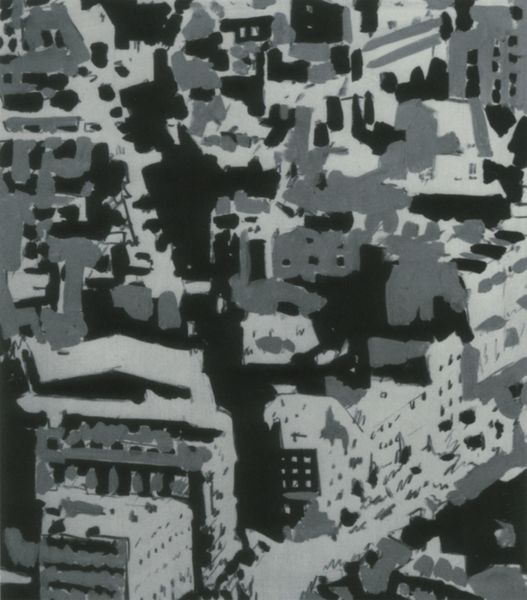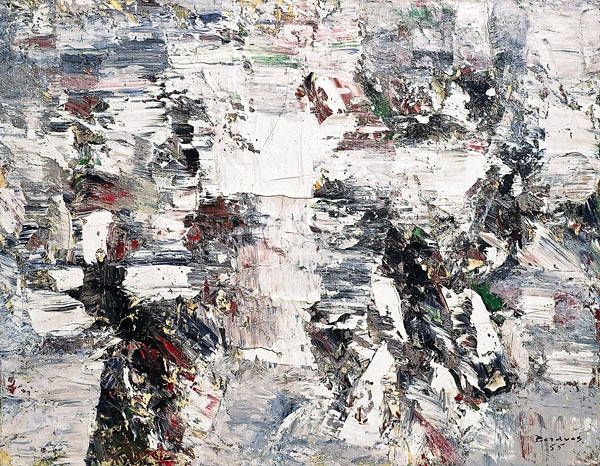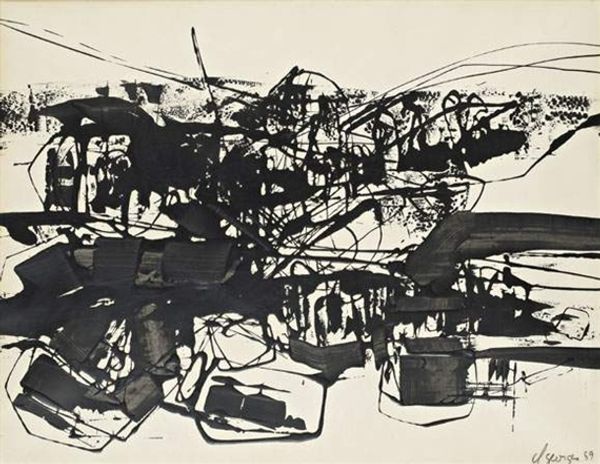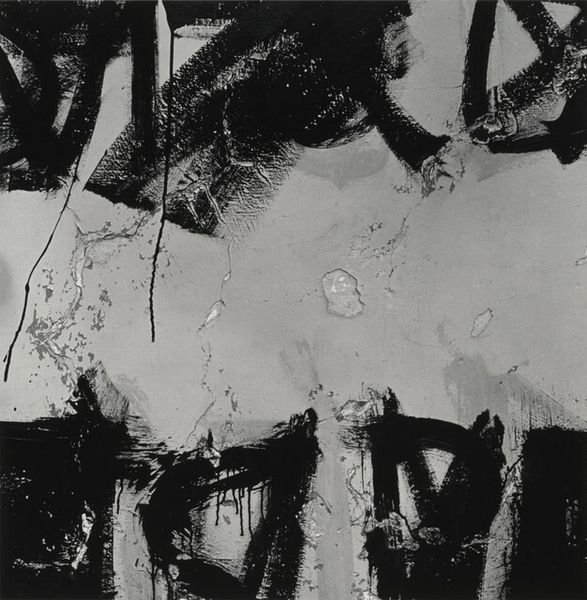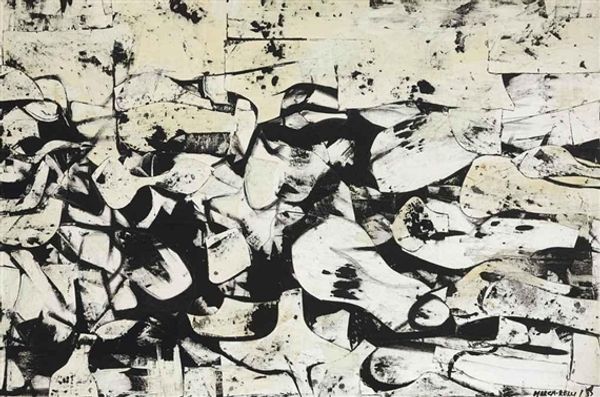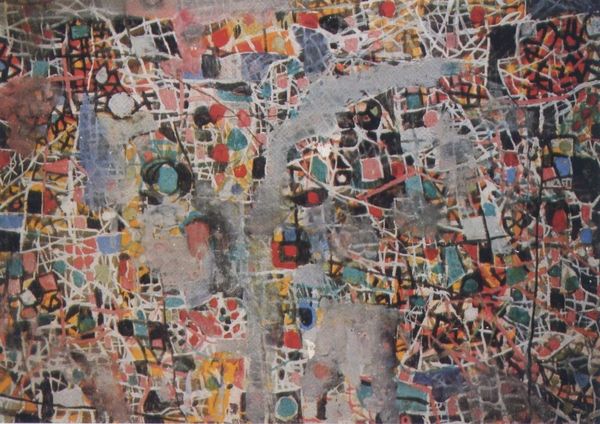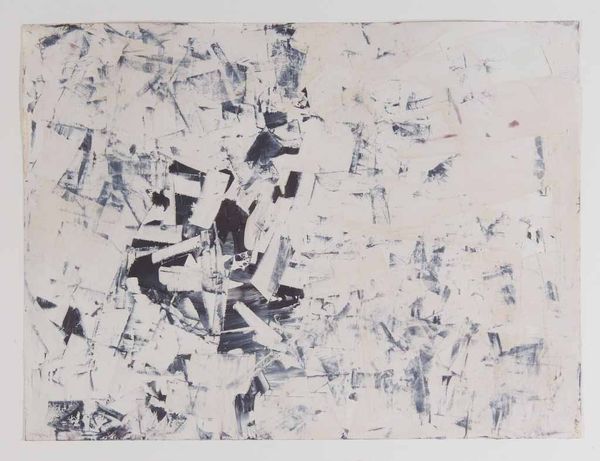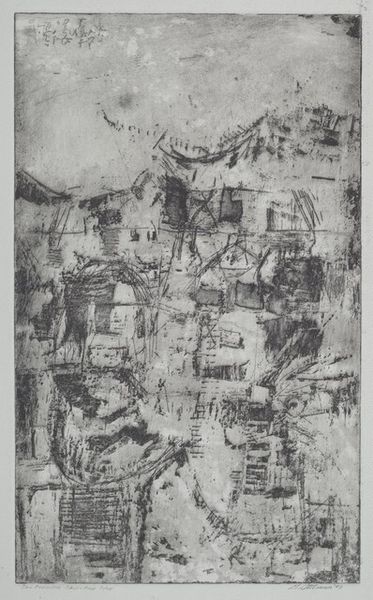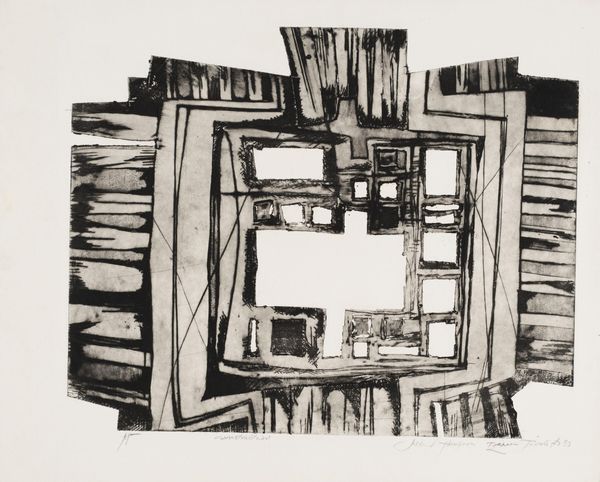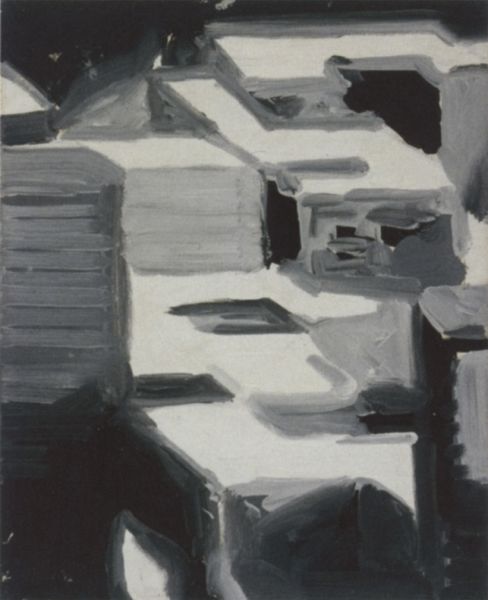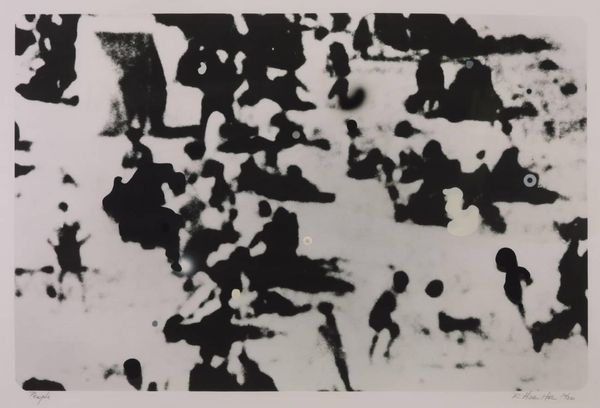
#
capitalist-realism
Copyright: 2019 Gerhard Richter - All Rights Reserved
Curator: The canvas before us is Gerhard Richter’s “Townscape,” painted in 1969. Editor: It’s dizzying. A wash of grayscale fragments suggesting... well, exactly what the title suggests, I suppose. Buildings, streets, but all in pieces. Curator: Richter, during this period, frequently explored themes of reconstruction and memory within the German psyche, often referencing photographs. The monochrome palette speaks to that era, doesn't it? Editor: Definitely. It feels like a fading photograph, almost a negative, forcing me to reconstruct the image myself. But there's also something unsettling in its fragmentation. I almost can feel postwar trauma reverberating through it, despite its urban facade. What kind of city do you think it represents? Curator: It's ambiguous, deliberately so. Could be Cologne, perhaps, given his personal history; however, this ambiguity aligns with post-war city planning: zones devoid of their pre-war meaning with a focus on reconstruction without sentimental regard. Editor: It resonates with a broader sense of dislocation too, perhaps that rootless modern condition, a city-mind that is permanently broken apart and rebuilt endlessly... This constant deconstruction hints at the instability of modernity, right? Curator: Precisely, it portrays urbanity’s precarious nature, a social commentary reflective of broader German issues in those decades. Editor: The visual noise somehow turns familiar landmarks unrecognizable which ultimately generates unease to any familiar inhabitants. Fascinating piece. Curator: Indeed. A poignant reminder of how our cities – and our identities – are continuously shaped by historical and cultural forces. Editor: Definitely; something that lingers far longer than a snapshot, this is a palimpsest of an epoch.
Comments
No comments
Be the first to comment and join the conversation on the ultimate creative platform.

